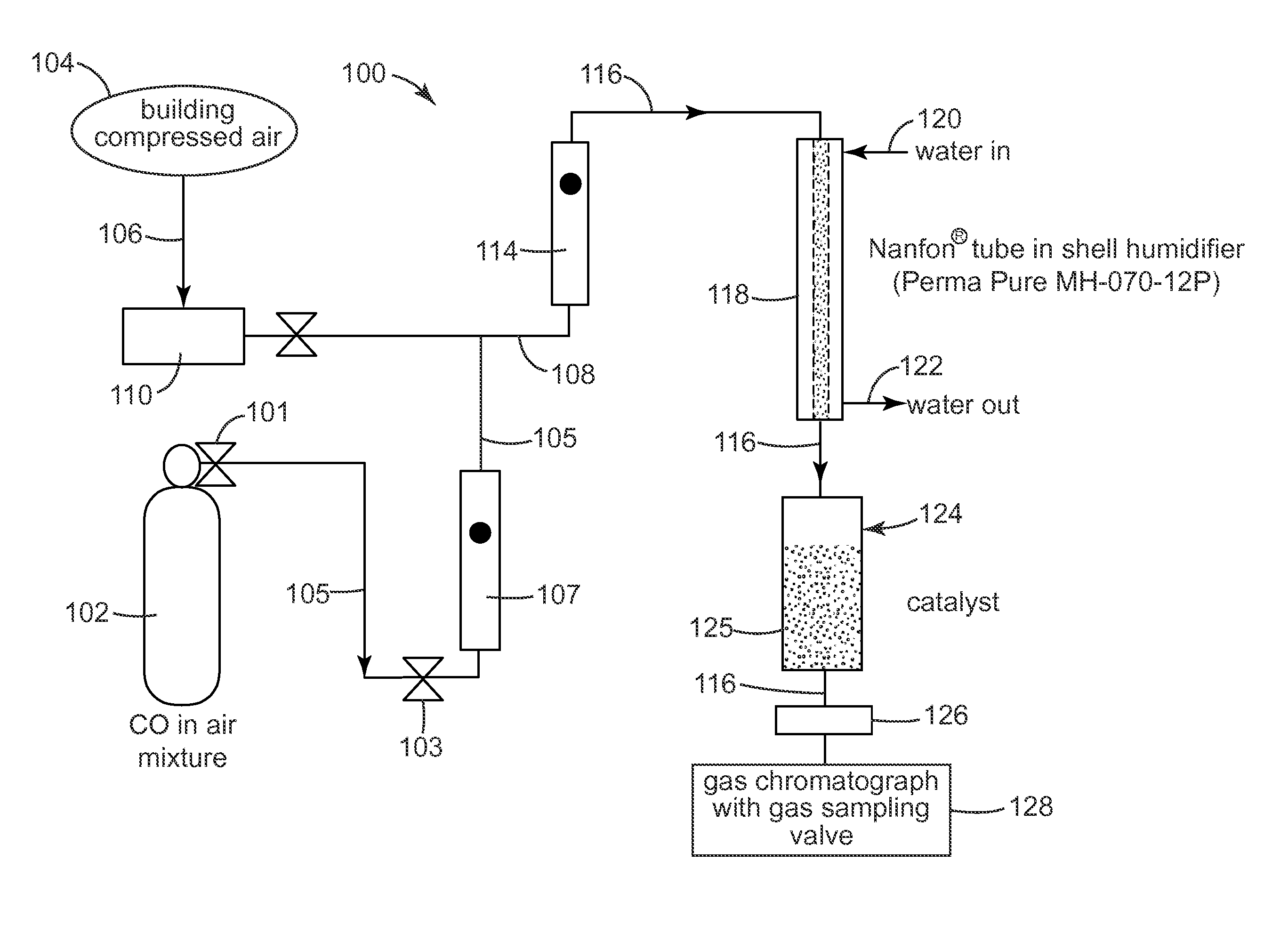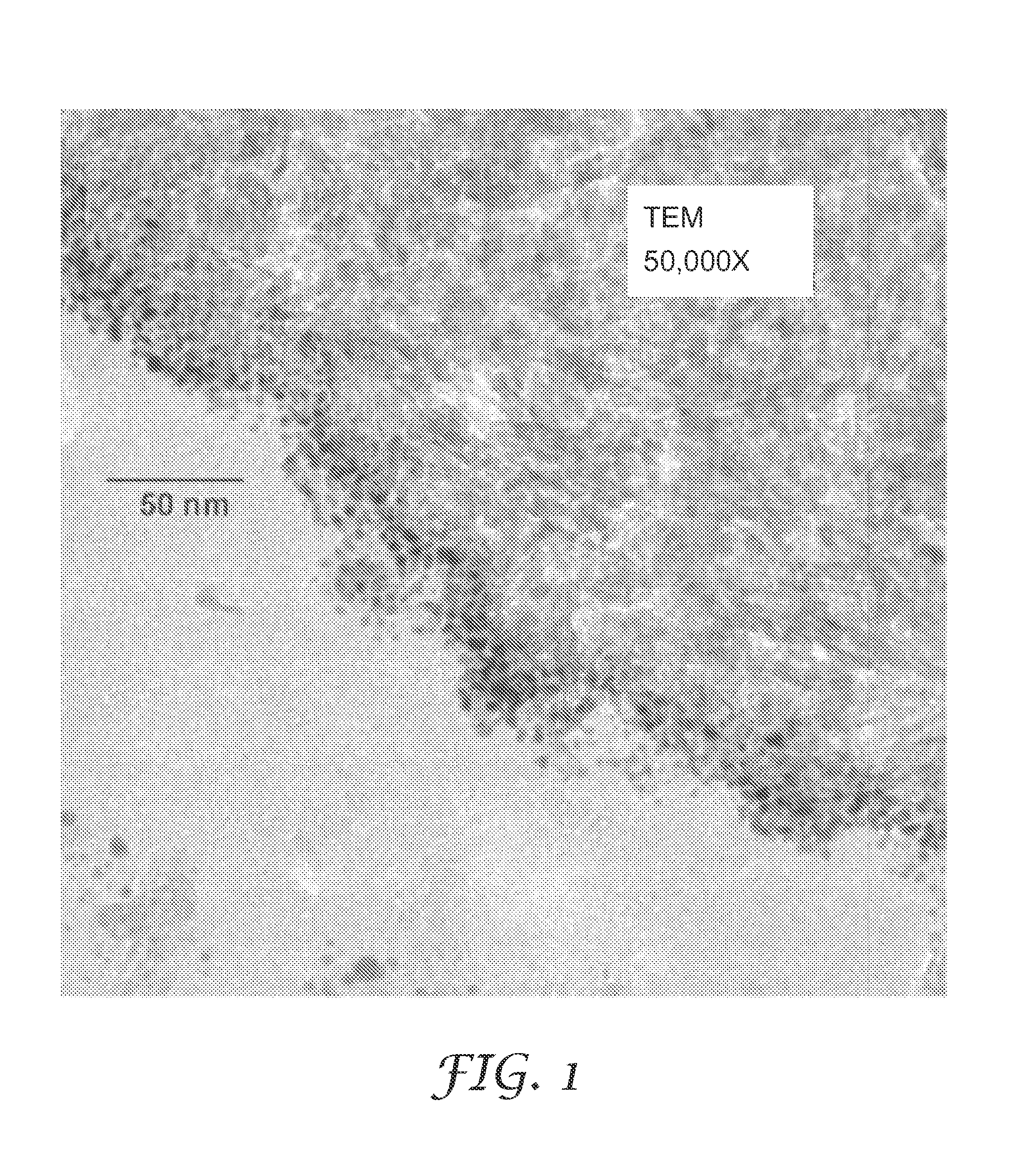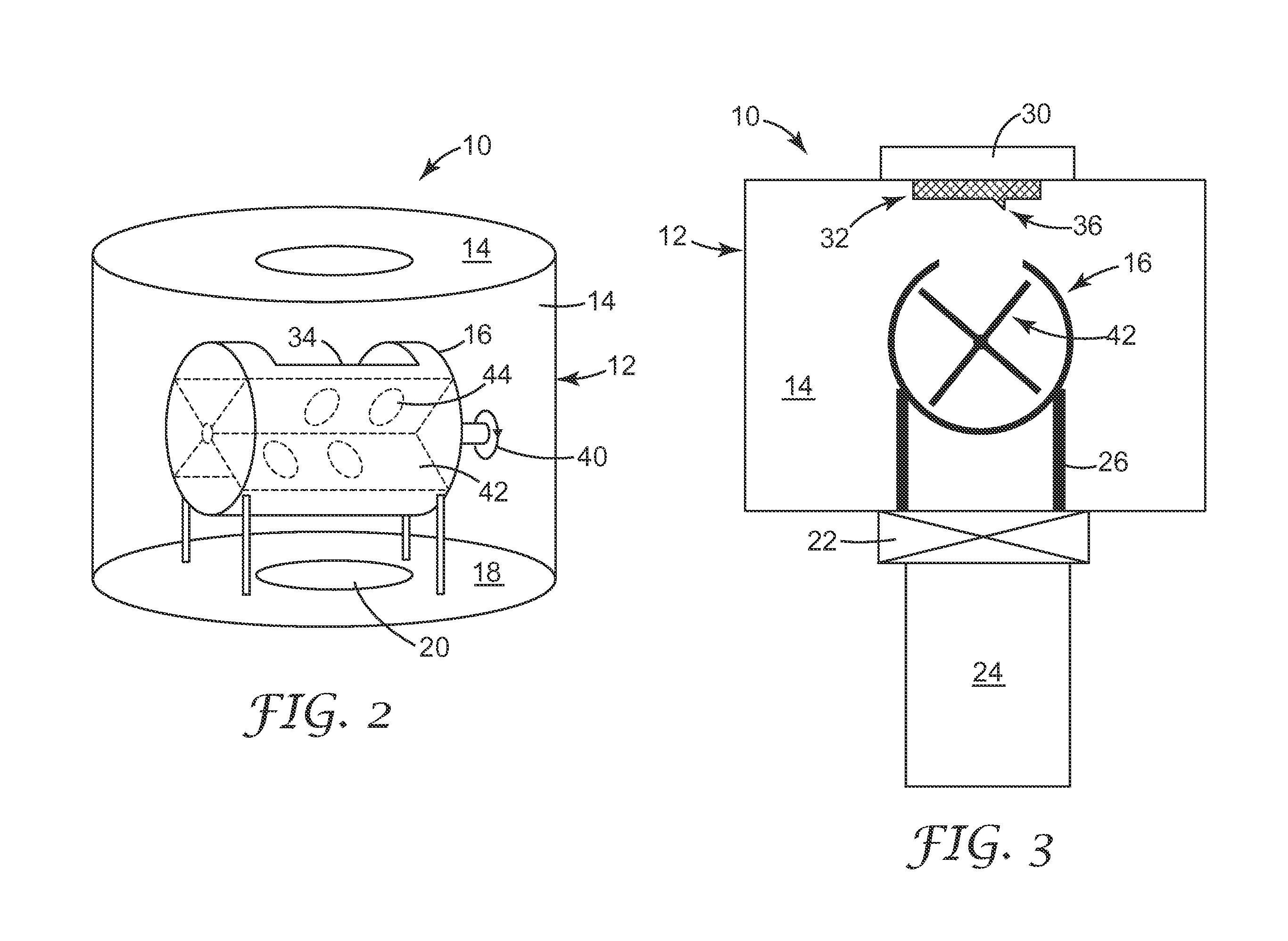Heterogeneous, composite, carbonaceous catalyst system and methods that use catalytically active gold
a carbonaceous catalyst and gold-based technology, applied in the field of gold-based catalyst systems, can solve the problems that the guest material provided on the carbonaceous host has very little, if any, practical impact on the organic filtering ability of the carbonaceous host material, and achieves the effects of low density, low cost and very economical use of carbonaceous host material
- Summary
- Abstract
- Description
- Claims
- Application Information
AI Technical Summary
Benefits of technology
Problems solved by technology
Method used
Image
Examples
example 1
Sputtered Au On TiO2 / Kuraray GG Carbon: Effect Of Step Change In CO Inlet Concentration
[0171] This sample was prepared by sputter coating gold onto 300 mL of Kuraray GG 12×20 mesh, activated carbon that had been coated with 10% Ishihara ST-31 titania dispersed in DI water.
[0172] 22.1 grams of ST-31 titania (Ishihara Sangyo Kaisha, LTD, Tokyo, Japan) was dispersed into 160 grams of deionized water utilizing an IKA Ultra Turrax T18 homogenizer (IKA Works, Inc., Wilmington, Del.). The slurry was spritzed (pumping the titania dispersion with a peristaltic pump (Cole Palmer Instruments Co, Chicago, Ill., model wz1r057) at 150 gr / min through a Qorpak finger-actuated trigger-sprayer (Qorpak, Bridgeville, Pa.) as a fine mist) onto 200 grams of Kuraray GG 12×20 mesh activated carbon that was mixed in a 1 gallon steel reactor rotating at 18 rpm at 20 degree angle. After the granules were coated, a heat gun was used to remove enough water to allow the granules to flow freely in the rotating ...
example 2
Sputtered Au On TiO2 / Kuraray GG Carbon: Lesser Amount Of Catalyst Material
[0175] The test of Example 1 was repeated, except only 50 mL of the same catalyst was used. Further, the CO challenge was held at 2500 ppm (no stepwise increase to 10,000 ppm was used in this test). The test results are shown in FIG. 11. The data depicted by the open circles show the temperature data at the outlet, and the data depicted by the black triangles show the detected CO data at the outlet. No CO was detected at the filter outlet during the entire 120 minutes of testing. The temperature of the air at the filter outlet (open circles on the graph) increased slightly and then remained steady at about 42.7° C. This example illustrates the extremely high activity for CO oxidation of the catalysts of the present invention.
example 3
Sputtered Au On TiO2 / Kuraray GG Carbon: Effect Of Step Change In CO Inlet Concentration At Higher Flow Rate
[0176] This sample was prepared by sputter coating gold onto 300 mL of Kuraray GG 12×20 activated carbon that had been coated with 10% Hombikat UV100 titania dispersed in DI water. 22.1 grams of Hombikat UV 100 (Sachtleben Chemie Gmbh, Duisburg, Germany) was dispersed into 150 grams of deionized water utilizing an IKA Ultra Turrax T18 homogenizer (IKA Works, Inc., Wilmington, Del.). The slurry was spritzed (pumping the titania dispersion with a peristaltic pump (Cole Palmer Instruments Co, Chicago, Ill., model wz1r057) at 150 gr / min through a Qorpak finger-actuated trigger-sprayer (Qorpak, Bridgeville, Pa.) as a fine mist) onto 200 grams of Kuraray GG 12×20 mesh activated carbon that was mixed in a rotating 1 gallon steel reactor rotating at 18 rpm at 20 degree angle. After the granules were coated, a heat gun was used to remove enough water to allow the granules to flow freel...
PUM
| Property | Measurement | Unit |
|---|---|---|
| temperature | aaaaa | aaaaa |
| residence time | aaaaa | aaaaa |
| residence time | aaaaa | aaaaa |
Abstract
Description
Claims
Application Information
 Login to View More
Login to View More - R&D
- Intellectual Property
- Life Sciences
- Materials
- Tech Scout
- Unparalleled Data Quality
- Higher Quality Content
- 60% Fewer Hallucinations
Browse by: Latest US Patents, China's latest patents, Technical Efficacy Thesaurus, Application Domain, Technology Topic, Popular Technical Reports.
© 2025 PatSnap. All rights reserved.Legal|Privacy policy|Modern Slavery Act Transparency Statement|Sitemap|About US| Contact US: help@patsnap.com



